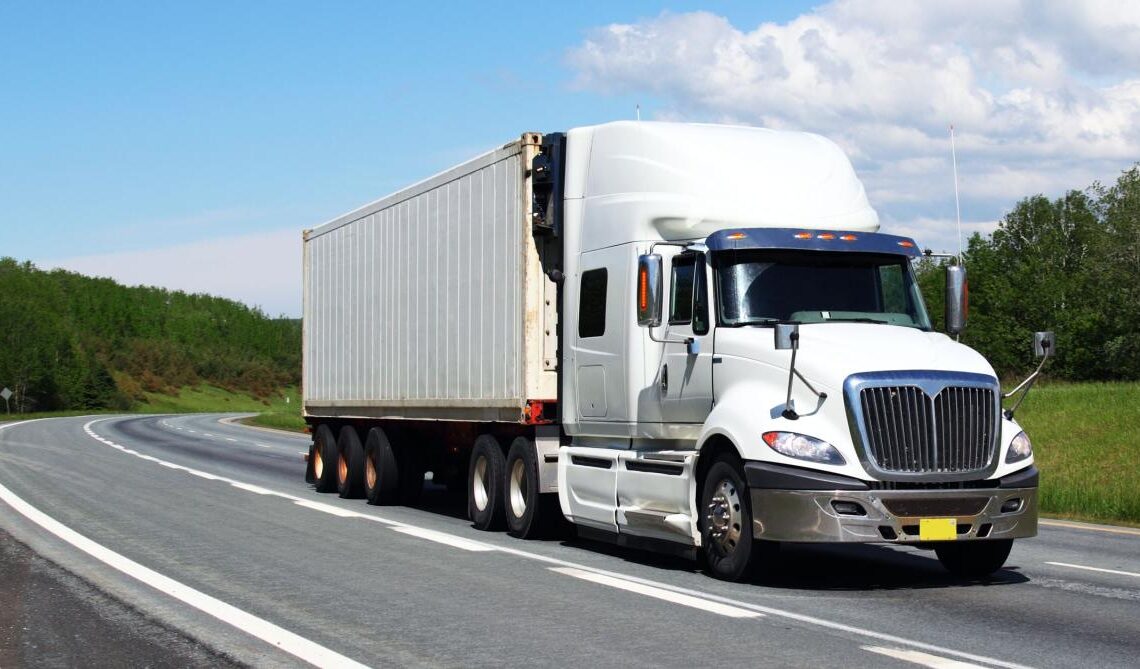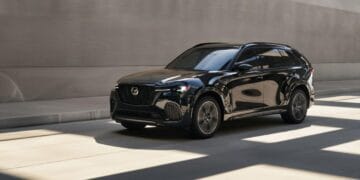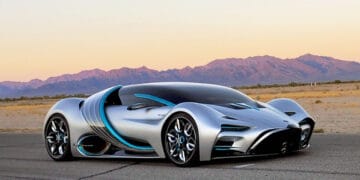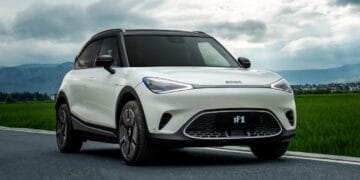Trucking’s New Horizon
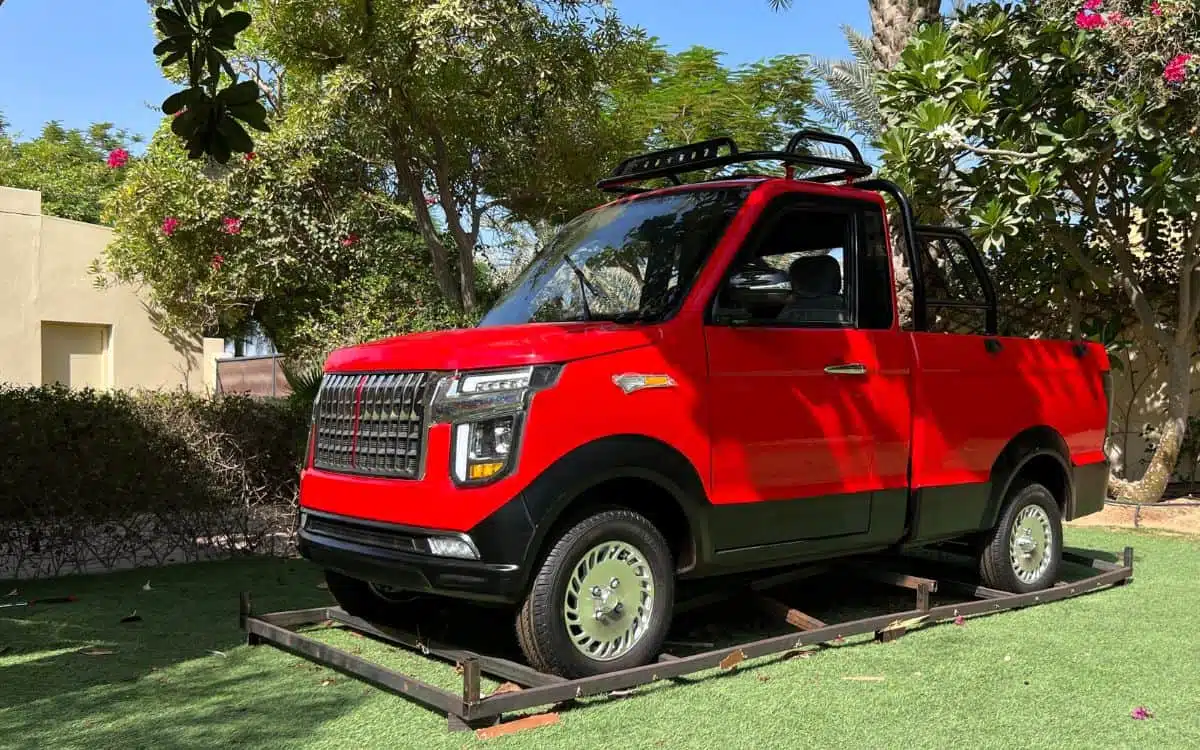
For decades, the truck market was characterized by incremental improvements in power, durability, and cargo capacity. However, the dawn of 2025 reveals a landscape fundamentally reshaped by global imperatives. The urgent need to reduce carbon emissions, coupled with breakthroughs in battery and fuel cell technologies, is propelling a rapid shift towards electrification. Simultaneously, the demand for smarter, more connected vehicles for both commercial and personal use is driving innovation in digital integration and autonomous capabilities. This revolution isn’t just about how trucks are powered; it’s about how they are designed, how they operate, and how they contribute to the broader economy.
The excitement surrounding these truck market shifts stems from their potential to unlock immense benefits. Imagine logistics networks that are cleaner, more efficient, and more reliable, delivering goods with reduced environmental impact and lower operating costs. Picture light-duty trucks that combine rugged capability with the refinement and technology of modern passenger vehicles. For businesses, this translates to improved profitability, enhanced sustainability credentials, and optimized supply chains. For consumers, it means access to more versatile, powerful, and environmentally conscious vehicles. This convergence of innovation, sustainability goals, and economic opportunity is positioning the truck market at the forefront of the automotive industry’s most significant transformations.
Core Drivers of Truck Market Evolution
Several powerful forces are compelling the current profound shifts in the truck market:
A. Electrification Mandates and Environmental Regulations:
A. Emissions Standards: Increasingly stringent global emissions regulations (e.g., Euro 7, California Air Resources Board – CARB) are pushing truck manufacturers away from traditional diesel and gasoline engines towards zero-emission powertrains.
B. City Access Zones: Growing numbers of urban areas are implementing low-emission or zero-emission zones, incentivizing the use of electric trucks for last-mile delivery and urban logistics.
C. Corporate Sustainability Goals: Large corporations are setting ambitious carbon neutrality targets, driving demand for electric trucks in their supply chains and fleets to meet environmental, social, and governance (ESG) objectives.
B. Technological Advancements:
A. Battery Technology: Significant improvements in battery energy density, power output, and charging speed are making electric trucks viable for increasingly longer ranges and heavier loads.
B. Fuel Cell Technology: Maturation of hydrogen fuel cell technology offers a compelling zero-emission solution for long-haul trucking, providing rapid refueling and competitive range for heavy-duty applications.
C. Autonomous Driving: Rapid development in autonomous driving systems (especially Level 4 for highway platooning and depot operations) promises increased efficiency, reduced labor costs, and enhanced safety in trucking.
D. Connectivity: Advanced telematics, IoT integration, and V2X (Vehicle-to-Everything) communication enable real-time fleet management, predictive maintenance, and optimized logistics.
C. Evolving Consumer and Commercial Demands:
A. Fuel Cost Savings: Businesses are keenly aware of the long-term fuel cost savings offered by electric and fuel cell trucks, especially given volatile fossil fuel prices.
B. Reduced Maintenance: EVs typically have fewer moving parts, leading to lower maintenance costs and less downtime for commercial fleets.
C. Increased Versatility in Light-Duty: Personal truck buyers demand more car-like comfort, technology, and luxury, alongside traditional utility.
D. Last-Mile Delivery Boom: The explosion of e-commerce has created immense demand for efficient, nimble, and often electric last-mile delivery vehicles for urban environments.
D. Supply Chain Optimization and Logistics Efficiency:
A. Real-time Tracking: Connected trucks allow for precise real-time tracking of goods, improving transparency and customer service.
B. Route Optimization: AI-powered route planning considers traffic, charging points, and delivery schedules to minimize travel time and fuel consumption.
C. Fleet Management Systems: Comprehensive digital platforms for managing entire truck fleets, including driver behavior monitoring, fuel consumption analysis, and maintenance scheduling.
Shifts Across Key Truck Segments
The impact of these drivers is unevenly distributed across different segments of the truck market, each experiencing unique transformations:
A. Light-Duty Trucks (Pickup Trucks and Vans):
A. Electrification Surge: The introduction of high-profile electric pickup trucks (e.g., Ford F-150 Lightning, Chevrolet Silverado EV, Ram 1500 REV, Tesla Cybertruck) and electric vans (e.g., Ford E-Transit, Rivian EDV) is a major shift. These offer strong performance, lower running costs, and unique features like mobile power outlets.
B. Personal Use vs. Commercial Use: Pickups continue to be popular for personal use (family vehicles, recreation), blending ruggedness with luxury. Vans are increasingly essential for last-mile delivery and various commercial services.
C. Technology Integration: These vehicles are leading the way in integrating advanced infotainment, driver-assistance systems, and seamless connectivity, blurring the lines between trucks and passenger vehicles.
D. Hybrid Options: More traditional gasoline pickups are also adopting hybrid powertrains for improved fuel efficiency.
B. Medium-Duty Trucks (Delivery Trucks, Box Trucks):
A. Urban Electrification Priority: This segment is a prime candidate for electrification due to their predictable routes, shorter daily ranges, and significant use in urban areas with strict emission regulations. Electric medium-duty trucks from companies like Daimler Truck (FUSO eCanter), Volvo, and start-ups are gaining traction.
B. Last-Mile Delivery Dominance: The growth of e-commerce is fueling immense demand for electric medium-duty vehicles optimized for efficient, quiet, and clean last-mile logistics.
C. Fleet Management Focus: Emphasis on sophisticated telematics and fleet management systems to optimize route planning, charging schedules, and maintenance for commercial operators.
C. Heavy-Duty Trucks (Long-Haul, Construction, Vocational):
A. Diverse Powertrain Solutions: While BEVs are emerging for shorter-haul heavy-duty applications (e.g., port drayage, regional hauling), hydrogen FCEVs are seen as the more viable long-term solution for extreme long-haul and heavy-load scenarios due to faster refueling and higher energy density.
B. Autonomous Piloting: Heavy-duty trucks are prime candidates for Level 4 autonomous driving, particularly for highway platooning (where trucks travel in close convoys to reduce drag) and automated depot operations, promising significant efficiency gains and driver assistance for long stretches.
C. Digitalization of Logistics: Deep integration with sophisticated logistics platforms for route optimization, load management, and predictive maintenance to maximize uptime.
D. Aerodynamic Design: New designs focusing on improved aerodynamics to reduce drag and enhance fuel efficiency for both electric and conventional powertrains.
Technological Innovations Driving the Shift
The transformation of the truck market is underpinned by groundbreaking technological advancements:
A. Battery Technology:
A. LFP and NMC Batteries: Continuous refinement of Lithium Iron Phosphate (LFP) and Nickel Manganese Cobalt (NMC) battery chemistries for improved energy density, lifespan, safety, and cost.
B. Modular Battery Packs: Flexible battery architectures that allow for scaling battery capacity based on range requirements, from smaller packs for urban delivery to massive ones for long-haul.
C. Fast Charging: Development of megawatt charging (MCS) standards and infrastructure for heavy-duty trucks to enable rapid high-power charging, reducing downtime.
B. Fuel Cell Technology:
A. Increased Efficiency and Durability: Advancements in fuel cell stack design and materials for greater efficiency, longer lifespan, and improved cold-start performance.
B. Hydrogen Storage: Innovation in high-pressure hydrogen storage tanks for increased volume and safety, allowing for greater range.
C. Green Hydrogen Production: Efforts to scale up production of “green hydrogen” (produced using renewable energy) to ensure the entire FCEV lifecycle is truly emissions-free.
C. Autonomous Driving Systems:
A. Sensor Suites: Integration of robust sensor arrays (LiDAR, radar, cameras, ultrasonic) optimized for large vehicles and heavy-duty environments.
B. AI for Perception and Planning: Advanced AI and machine learning algorithms capable of handling the complexities of truck driving, including large blind spots, complex maneuvering, and interaction with other heavy vehicles.
C. Platooning: Autonomous platooning technology that allows multiple trucks to travel in close formation, reducing aerodynamic drag and improving fuel efficiency.
D. Connectivity and Telematics:
A. Real-time Diagnostics: Remote monitoring of vehicle health, predictive maintenance alerts, and over-the-air (OTA) updates for vehicle software.
B. Fleet Management Platforms: Cloud-based platforms offering comprehensive tools for route optimization, driver management, compliance, and detailed analytics on vehicle performance and utilization.
C. V2X Communication: Enabling trucks to communicate with each other (V2V) and with infrastructure (V2I) for enhanced safety, traffic flow optimization, and autonomous driving coordination.
E. Advanced Manufacturing and Materials:
A. Lightweighting: Increased use of lightweight materials (e.g., high-strength steel, aluminum alloys, composites) to compensate for battery weight in EVs and improve overall efficiency.
B. Modular Design: Truck platforms designed with modularity in mind to easily accommodate different powertrains (ICE, BEV, FCEV) and body configurations.
Economic and Societal Ramifications
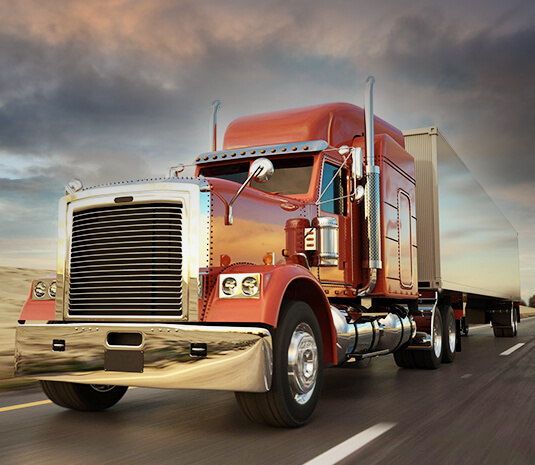
The truck market shifts have broad economic and societal implications:
A. Reduced Operating Costs for Businesses:
A. Fuel Savings: Lower per-mile energy costs for electric and fuel cell trucks.
B. Lower Maintenance: Fewer moving parts in electric powertrains lead to reduced servicing costs and less downtime.
C. Driver Cost Reduction (Autonomous): Potential for significant savings in labor costs as autonomous driving capabilities mature, especially for long-haul routes.
B. Environmental Benefits:
A. Cleaner Air: Significant reduction in NOx, PM2.5, and other pollutants, especially in urban areas where trucks frequently operate.
B. Lower Carbon Footprint: Reduced greenhouse gas emissions from the transportation sector, contributing to climate change mitigation.
C. Reduced Noise Pollution: Quieter electric trucks improve urban livability and reduce noise disturbance, particularly during night deliveries.
C. Job Market Transformations:
A. New Roles: Creation of jobs in EV truck manufacturing, battery production, charging infrastructure, data analytics, and autonomous fleet management.
B. Reskilling: Need for extensive retraining programs for truck drivers to transition into roles like autonomous fleet supervisors or logistics managers.
C. Potential Displacement: Long-term potential for displacement of some driving roles, necessitating proactive workforce planning.
D. Enhanced Logistics Efficiency and Supply Chain Resilience:
A. Faster Deliveries: Optimized routes and potential for 24/7 autonomous operations lead to quicker and more predictable delivery times.
B. Supply Chain Transparency: Connected trucks provide real-time visibility into the movement of goods, improving supply chain management and responsiveness.
C. Reduced Congestion: More efficient truck operations can contribute to less traffic congestion, especially in urban areas.
E. Energy Security:
A. Reduced Oil Dependence: Shifting heavy-duty transport away from diesel reduces reliance on imported fossil fuels, enhancing national energy security.
B. Diversified Energy Mix: Promotes investment in domestic electricity generation (including renewables) and hydrogen production.
Global Landscape and Regional Dynamics
The shifts in the truck market are global, but specific dynamics play out regionally. In Indonesia, for example:
A. Growing Demand for Commercial Vehicles: Indonesia’s robust economic growth and burgeoning e-commerce sector drive strong demand for light and medium-duty trucks for logistics and construction.
B. Electrification Nascent but Growing: While early, the push for EV adoption in Indonesia (supported by government incentives, local manufacturing ambitions for batteries and EVs) will increasingly include commercial vehicles. Electric light trucks and vans for urban delivery are expected to see significant growth.
C. Infrastructure Development: The development of charging infrastructure will be critical. Given Indonesia’s vast archipelago, decentralized charging solutions and potentially battery swapping for commercial fleets could be important.
D. Price Sensitivity: Affordability of electric trucks will be a key factor for adoption among small and medium enterprises (SMEs) in Indonesia.
E. Government Policy: Future government policies on emissions standards, EV adoption targets, and local content requirements will heavily influence the pace and direction of the truck market’s shift in Indonesia.
F. Heavy-Duty Challenges: For heavy-duty and long-haul transport in Indonesia’s diverse terrain, diesel will likely remain dominant in the short to medium term due to range and infrastructure limitations, but hybrid and eventually FCEV solutions will gain traction.
The Future Beyond 2025
Looking beyond 2025, the trajectory of the truck market points towards even more profound transformations:
A. Autonomous Trucks as Standard: High levels of autonomy (Level 4+) becoming standard for long-haul highway segments, with human drivers primarily handling first-mile/last-mile and complex urban maneuvers.
B. Ubiquitous Electric Delivery: Electric light and medium-duty trucks dominating urban delivery, driven by fully integrated logistics platforms.
C. Hydrogen Ecosystem Maturity: A mature hydrogen production and fueling ecosystem supporting widespread FCEV heavy-duty trucking.
D. Integrated Logistics Ecosystems: Trucks seamlessly integrated into vast, AI-powered logistics networks, optimizing every step of the supply chain from manufacturing to final delivery.
E. Drone and Robotics Integration: Increased use of autonomous drones and ground robots for last-mile delivery, working in conjunction with larger electric trucks acting as mobile hubs.
F. Modular Trucking: Development of highly modular truck platforms that can be easily configured for various tasks (e.g., passenger pods, cargo modules) and powered by swappable battery packs or fuel cells.
Conclusion
The truck market shifts unfolding in 2025 signify a pivotal moment in the evolution of commercial and personal transportation. Driven by an urgent need for sustainability, enabled by rapid technological advancements, and shaped by dynamic economic forces, trucks are transitioning into cleaner, smarter, and more efficient machines. From the electrifying roar of new electric pickups to the silent, autonomous journeys of future heavy-duty haulers, the industry is embracing a new paradigm.
While challenges related to infrastructure, cost, and regulatory harmonization remain significant, the momentum towards a more sustainable and intelligent trucking future is undeniable. These transformations promise not only immense environmental benefits through reduced emissions and noise but also fundamental improvements in logistical efficiency, economic competitiveness, and overall quality of life. The global truck market is not merely changing; it is actively forging the future of how goods are moved, how industries operate, and how our world connects, one clean, smart, and powerful truck at a time. The road ahead is electric, and it’s being redefined right now.

